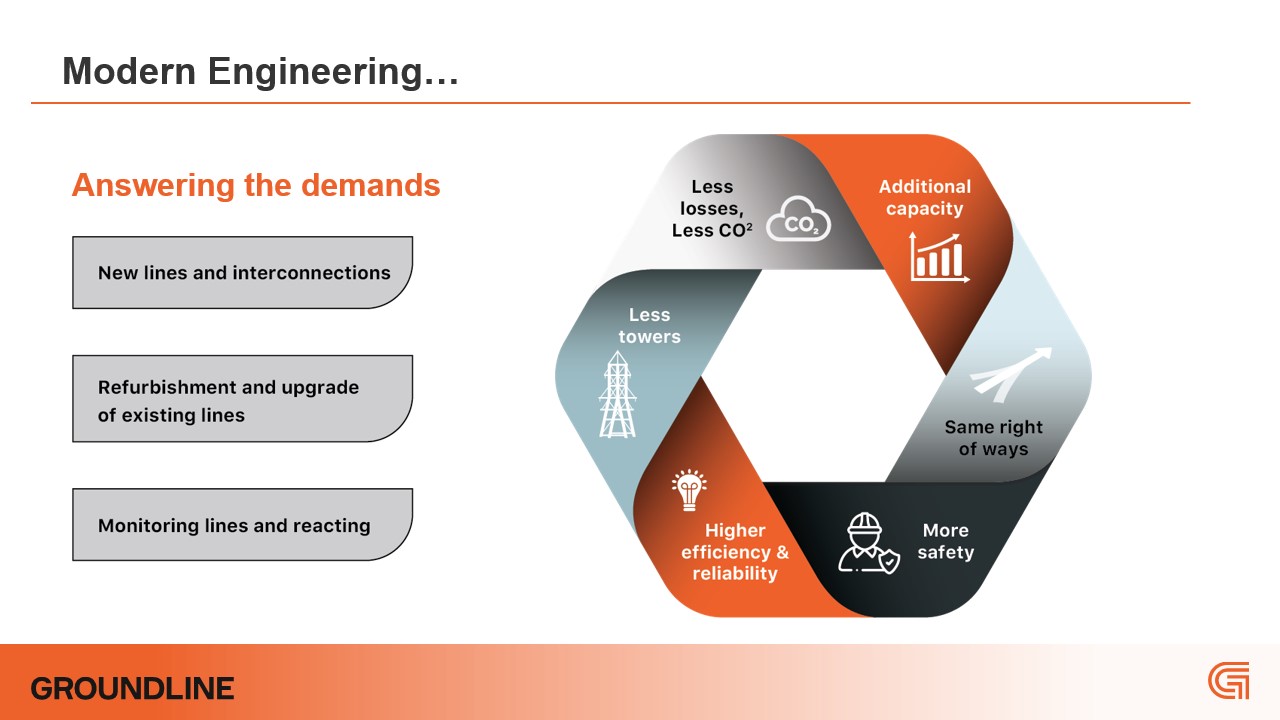All over the world, the electricity industry is under pressure, but is struggling to deliver.
Not only does our industry play a critical role in delivering power for the needs of today, but we are being asked to fundamentally change what we do in order to help our customers and society adapt for the future.
Demand for power is changing, with additional power generation required to meet changing consumer needs. At the same time, societal and political will has shifted, requiring the industry to create more power, but at the same time, do it in a way that reduces any negative environmental impacts. Countries around the world have signed up to net-zero emissions targets and this is putting pressure on the power industry. With ever more adverse weather events, governments are also recognising the need to ensure that power supplies are strong and resilient.
Rather than embracing new technologies and infrastructure to help us meet these needs, we see many in the industry continue to invest in outdated infrastructure. Far too often, old infrastructure is simply ‘upgraded’ with a new version of the same old technology, sometimes driven by a focus on short-term costs, but often simply an attitude of “this is how we have always done it.”
We believe our sector needs change – the technology is already here and it doesn’t cost the earth.
MEETING THE DEMAND FOR RELIABLE, AFFORDABLE AND SUSTAINABLE POWER
The demand for energy is rising as populations grow and our reliance on power-dependent tools and systems increases. Customers expect power to be readily available, safe, affordable and with consideration of the environmental impact. Today, customers do flick a switch and the power mostly goes on, but the cost and environmental credentials are out of step with what most of our society wants and what our planet needs. Historically, power cuts and outages were deemed a problem only for the developing world, however, we’re now seeing more of these issues in the so-called developed world, primarily driven by a lack of electricity infrastructure spend over many years.
NEW, BUT OLD
We often see the focus in the industry of success being measured by the amount of new generation created. But we have a leaky bucket. There appears to be a distinct lack of focus on energy losses in our grids. We are losing too much through these lines, even when they are new lines.
Imagine you own an old car. With careful maintenance you can get it to last a long time and still do the job it were bought for – drive you from A to B.
Eventually it is time for you to upgrade and buy a new car.
Imagine replacing your old car with a newer version of the same old car. It looks shiny on the outside, but the technology is still old, inefficient, unsafe and negatively impacts the environment. There’s no power steering, airbags or ABS; it pollutes the environment and runs on leaded fuel.
With a more modern car you save money through less things going wrong; you save time through less servicing; you have safety features that weren’t imagined when the old cars were built; they are more fuel efficient and much more reliable.
You wouldn’t replace your old car with an old car, but that is exactly what we do with our transmission lines.
A lot of our networks are old and when it comes to upgrades, we replace them with a newer version, but essentially the same old 1950s and ‘60s technology.
THE POWER OF BEST PRACTISES
Building the right power solutions is a complex engineering challenge, but it is achievable with the right approach. We have the know-how and tools to do this today.
We can take a more holistic view, considering factors such as conductivity, metallurgical properties, conductor characteristics, tower strength, safety standards, optimal route design, stakeholder engagement and local environmental influences, such as snow, wind and even birds. These are constraints and nuances that our designers take into consideration to ensure the right solutions are used for the right location.
Best practice, such as local area monitoring and the deployment of dynamic line rating systems is common in many jurisdictions globally. Some regions are still trailing in using these practices – including Australia and New Zealand, where for example, we still see the use of general weather data across a region, rather than location specific. We’re not even happy taking such broad weather data for our own decisions of what to wear for the day, let alone making decisions which impact such investment decisions and the efficient provision of power for our children’s children!

THE COST OF POOR DESIGN
Inadequate solutions and poor design choices are impacting consumers, businesses and the wider economy already.
Power-outages caused by severe weather, the ongoing maintenance costs and even the loss of lives through wildfires. We’ve seen some areas in the USA, for example, struggling to attract investment and grow because of their lack of power resilience.
We need to stop accepting these as inevitable and acceptable.
All too often, decision makers consider only the capital expenditure of projects, rather than a Total Cost of Ownership approach. This approach can add millions of dollars each year to the capital expenditure.
By investing smartly in modern infrastructure, the sector can minimize energy loss, reduce environmental impact and ensure a resilient, reliable and sustainable energy supply – all at the same overall cost.
A CALL FOR CHANGE
Why are we still installing older high-loss designs?
With the growing importance of renewable energy sources like wind, solar and pumped hydro, we encourage the industry to embrace modern technology and practices. This is about politicians, policy-makers and those in the industry, understanding and agreeing on the imperative to invest for the long-term, rather than the short-term capital spend view that pervades today.
We need to upgrade infrastructure that can effectively transmit energy with minimal energy loss and increased resilience. By doing so, the sector can enhance sustainability and maximize the social, environmental and financial benefits of renewable power sources.
Aging transmission networks require reinforcement through best practices in engineering, the integration of new infrastructure and the connection of renewable energy sources. Better interconnections, coordination and a focus on reducing line losses are essential. This is all technically doable today, there is a strong social push to do it, so we call on the industry to take action with a sense of urgency.
By embracing new technologies, upgrading infrastructure, and prioritizing sustainability, the sector can provide reliable, affordable and environmentally friendly power. It is time for the industry to unite, take the lead and work towards a more resilient and sustainable electricity grid.
What part are you going to play?











